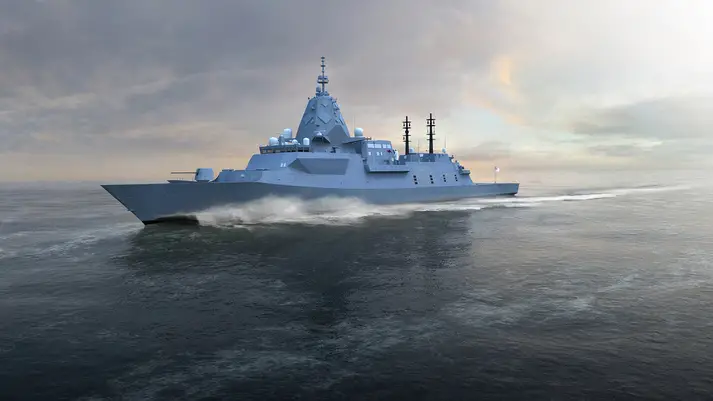Propellers for Australia’s elite submarine-hunting warships are one-step closer to being made in Australia, delivering a critical local capability that will be able to be used in future naval ship-build programs. BAE Systems Australia who will build nine anti-submarine warfare Hunter class frigates for the Royal Australian Navy, has awarded WA-based company VEEM a $1.76m contract to manufacture two prototype propeller blades and a propeller hub under the guidance of OEM Kongsberg Maritime. This is the final test of VEEM’s capability to manufacture to the Hunter’s stringent requirements and is a significant milestone for the Perth-based marine technology company, as it endeavours to become a Defence-qualified warship propeller manufacturer for the Hunter program. Through the Hunter Class Frigate Program, BAE Systems is committed to maximising opportunities for Australian industry.
Since 2020, VEEM has been supported by marine technology company Kongsberg Maritime, which is the propeller supplier for BAE Systems’ Type 26 frigates currently under construction in the UK. The Hunter class frigate design is based on the Type 26. Should VEEM’s prototype propellers meet requirements and pass Kongsberg Maritime’s quality approvals, it will pave the way for VEEM to be down-selected for the next phase – propeller manufacture for the first batch of three Hunter class frigates. VEEM is expected to commence work on the prototype propeller blades at its Canning Vale facility in November 2022, and will complete the work by March 2024. The blades will be the same weight and size of those on the Hunter class, but they won’t be used on the first warship as they will be subject to destructive testing to verify procedures that will be used in the manufacturing process.
BAE Systems Australia Managing Director — Maritime, Craig Lockhart, said:“I am delighted VEEM is progressing with its journey to join the Hunter class frigate supply chain, and congratulate Kongsberg Maritime for supporting VEEM and our efforts to grow Australian industry capability (AIC). Building AIC is more than just spending money in Australia – it is about working with small and medium local companies to ensure they have the right cyber security systems in place, the right equipment and tools and the right workforce to manufacture and assemble parts of what is arguably the most complex warship on Earth. We have already placed contracts with more than 50 Australian businesses to support the Hunter program’s prototyping phase, and we are close to contracting more local companies for equipment and parts manufacture, supply and assembly for the first three Hunter class frigates.”

Kongsberg Maritime (KM) Pty Ltd Country Manager, Jamie Kilsby, said: “KM recognise AIC is a fundamental and essential component of Australian Defence-related shipbuilding and sustainment. Nothing painted a brighter light on the need for domestic capability than the extensive travel restrictions COVID placed on all of us. We quickly learnt during COVID lockdowns if the capability wasn’t here, it wasn’t getting here. Not only are we very happy with the casting and machining capabilities of the VEEM organisation but culturally they have been excellent to work with and are testament to the Australian ‘can do’ attitude. We are very much looking forward to developing this relationship with VEEM through the Hunter program and other Commonwealth shipbuilding and sustainment programs.”
VEEM Managing Director, Mark Miocevich, said: “We are excited that the project is moving closer to full production. This project brings with it immense challenges that to date our team, working collaboratively with all partners, have successfully met. I am very proud of our team working on this project and are delighted that the sharing of VEEM’s and Kongsberg’s decades of knowledge can be put to use on what is a highly specialised application. We are particularly excited about the possibility of also supplying to other T26 programs around the world. The project will bring investment, employment and key sovereign industrial capability into Western Australia at a time where it is evident how easily global supply chains can be disrupted.”
The Hunter-class frigate is a future class of heavy frigates for the Royal Australian Navy (RAN) to replace the Anzac class. Construction is expected to begin in 2022, with the first of nine vessels to enter service in 2031. The Program is expected to cost AU$35 billion and a request for tender was released in March 2017 to three contenders: Navantia, Fincantieri, and BAE Systems as part of a competitive evaluation process. Shipbuilders working on the Hunter program are currently manufacturing five prototype ship blocks to test and refine the processes, systems, tools, facilities and workforce skills ahead of construction of the first Hunter ship blocks in May 2023, which will become part of the first ship. The nine Hunter class frigates, which will be built at the Osborne Naval Shipyard in South Australia, will provide the Royal Australian Navy with submarine-hunting and warfighting capability for decades to come.














